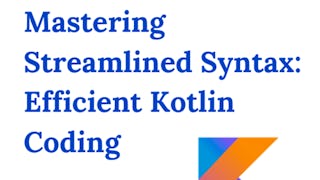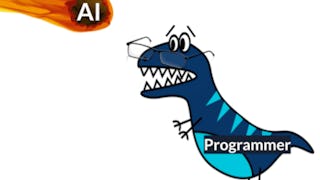This course is targeted to scientists, engineers, scholars, or anyone seeking to solve problems efficiently in high-performance computing environments or in the cloud. Students completing this course will have a basic understanding of how to find bottlenecks in their programs as well as how to address those bottlenecks. The course will provide a high-level introduction to modern compute node architectures of high-performance and cloud computing instances.

Gain next-level skills with Coursera Plus for $199 (regularly $399). Save now.

Efficient Programming
This course is part of High-Performance and Parallel Computing Specialization


Instructors: Shelley Knuth
Included with
Recommended experience
What you'll learn
Describe the computing and memory architecture of a supercomputing node or cloud computing instance
Utilize compiler and libraries to increase the performance of your program
Understand how to utilize vector operations of a modern microprocessor to maximize performance
Use OpenMP directives to improve vectorization of your programs
Skills you'll gain
Details to know

Add to your LinkedIn profile
August 2025
5 assignments
See how employees at top companies are mastering in-demand skills

Build your subject-matter expertise
- Learn new concepts from industry experts
- Gain a foundational understanding of a subject or tool
- Develop job-relevant skills with hands-on projects
- Earn a shareable career certificate

There are 5 modules in this course
In this module, we cover an approach to analyze and optimize program performance, such as profiling, using optimized libraries, and compiler options for increasing efficiency.
What's included
5 videos2 readings1 assignment1 programming assignment
In this module, we examine simple techniques that help with program performance. We are looking at scalar and loop optimization methods that can have a large impact on a program’s floating-point performance.
What's included
5 videos1 assignment1 programming assignment
In this module, we introduce the basic architecture of modern computers focusing on how the architecture influences program performance. We are looking at processor level data parallelism and how optimized code for parallelism has a much increased floating-point performance.
What's included
4 videos1 assignment1 programming assignment
Memory performance is generally the main performance bottleneck since the speed of the main memory has not kept up with the capabilities of processors to process floating-point numbers. We introduce how layers of fast memory, called cache memory, can speed up computations and provide an example of how to optimize algorithms for better memory performance.
What's included
4 videos1 assignment1 programming assignment
This module will provide an introduction to parallel and high throughput computing. It will also demonstrate slurm job arrays, where there are mechanisms for working with many similar jobs quickly and easily. Finally, this module will look at running many jobs concurrently with GNU Parallel.
What's included
4 videos1 assignment1 programming assignment
Earn a career certificate
Add this credential to your LinkedIn profile, resume, or CV. Share it on social media and in your performance review.
Instructors


Offered by
Explore more from Computer Security and Networks
 Status: Free
Status: Free Status: Free Trial
Status: Free TrialUniversity of Colorado Boulder
 Status: Preview
Status: PreviewFred Hutchinson Cancer Center
 Status: Free Trial
Status: Free TrialUniversity of Colorado Boulder
Why people choose Coursera for their career




Frequently asked questions
To access the course materials, assignments and to earn a Certificate, you will need to purchase the Certificate experience when you enroll in a course. You can try a Free Trial instead, or apply for Financial Aid. The course may offer 'Full Course, No Certificate' instead. This option lets you see all course materials, submit required assessments, and get a final grade. This also means that you will not be able to purchase a Certificate experience.
When you enroll in the course, you get access to all of the courses in the Specialization, and you earn a certificate when you complete the work. Your electronic Certificate will be added to your Accomplishments page - from there, you can print your Certificate or add it to your LinkedIn profile.
Yes. In select learning programs, you can apply for financial aid or a scholarship if you can’t afford the enrollment fee. If fin aid or scholarship is available for your learning program selection, you’ll find a link to apply on the description page.
More questions
Financial aid available,





